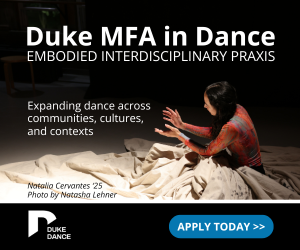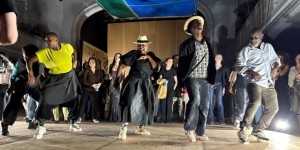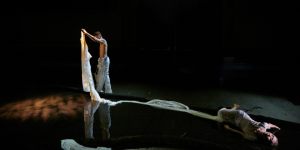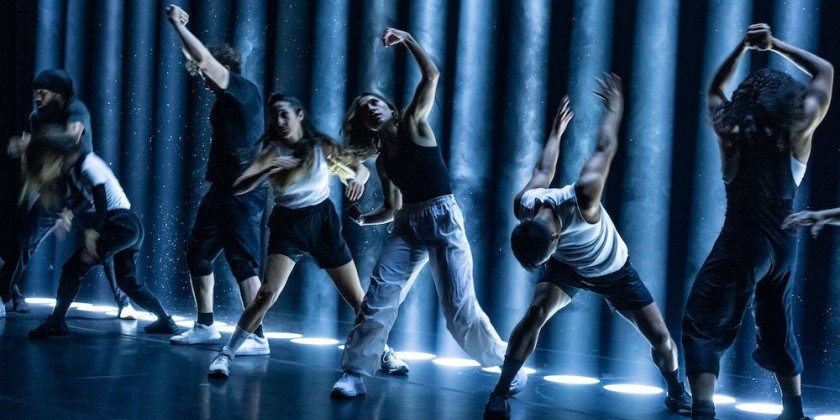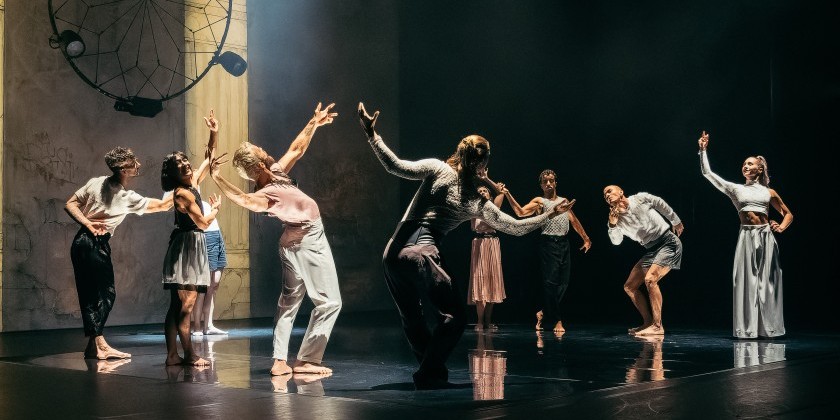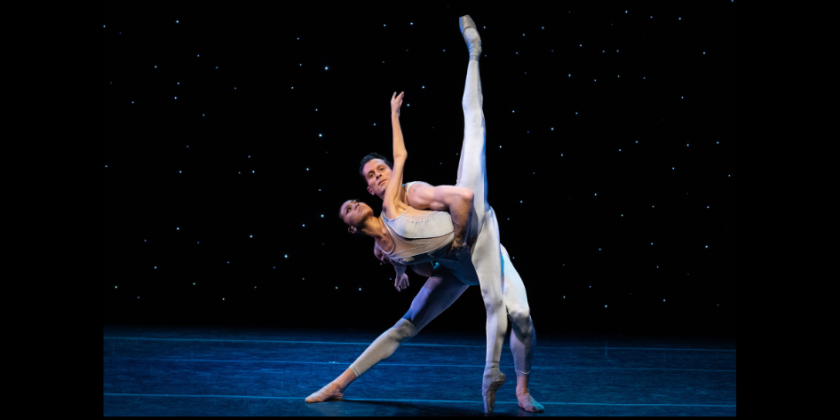IMPRESSIONS: Eiko Otake and Wen Hui in "What is War"
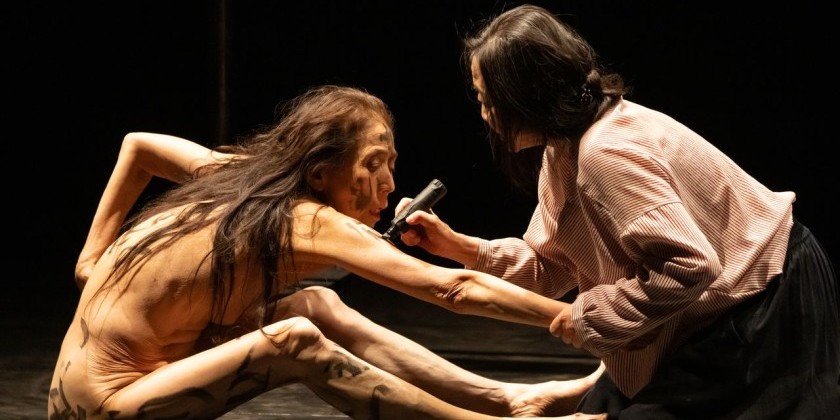
Created by Eiko Otake and Wen Hui
Lighting Design by David Ferri
Dramaturgy by Iris McCloughan
Mirror originally designed by Carina Rockart
Constructed by Paul Martin and Holly Wenger
A border of loose soil marks the limit of the stage in What Is War, a startling and gutsy collaboration between dancers Eiko Otake and Wen Hui, which opened at BAM’s Fishman Space as part of the Next Wave Festival, on Oct. 21. Beginning at opposite ends of this dirt path, the women shuffle slowly toward each other. One is Japanese, the other Chinese, and a history of bloody conflict between their nations has imposed this distance between them giving them a long road to travel if they want to meet.

We cannot be sure, in fact, that these women will meet. Though Eiko keeps a burning gaze fixed on her fellow dancer, and reaches out with a crabbed gesture, Wen Hui stares beyond her with a mask of aloofness that might suggest indifference, or conceal distaste. As Wen Hui passes by apparently unseeing, Eiko recoils. Watching this mini-drama, we feel the snub, and grieve for a lost opportunity. But then Wen Hui pauses, turns halfway, and sinks wearily to the ground with Eiko hunkering down nearby. There’s no use pretending the other one doesn’t exist.
Thus, in a few expressive moments, What Is War reveals its creators’ plan. The Second World War (1938-1945) scorched the globe, catching millions of victims and combatants in its grisly machinery. The number of atrocities is beyond our reckoning, and the dead are long asleep. So, to rouse our empathy, Eiko and Wen Hui will have to make the war personal, rendering it immediate in a dialogue, now muted and now frenetic, between a couple of crazy, old ladies.

Why do they care? Both Wen Hui (65), and Eiko (73) were born after the Second World War ended. Yet a loved one’s suffering can be felt more deeply than one’s own; and the war stories Wen Hui and Eiko inherited from their parents, though curtly and matter-of-factly told, left their mark. What should disturb us is the gulf between the sensibility of these artists, who have carried the burden of their parents’ memories into old age, and the complete absence of sensibility among our own political leaders. In Washington and London, the psychopathic lack of empathy---or, indeed, of any moral boundaries---could plunge us into another global catastrophe. Because of this imminent danger, not out of sentimentality, Wen Hui and Eiko proceed with the deep conviction that we must remember. What is War is an act of conscience.

Wen Hui’s story begins in October 1940, with a Japanese air raid on the city of Kunming, China. A film projected on the backdrop shows the enemy bombers silhouetted black against the sky. A terrified crowd shoves through the street, women carrying babies. Flames engulf whole buildings. A year later, during a similar raid, Wen Hui tells us, a woman lay in bed, too sick to flee, her 5-year-old daughter at her side. When a bomb burst nearby, the woman died of shock. The child, who survived, was Wen Hui’s mother. Later, the absence of Wen Hui’s grandmother left a mysterious gap. For a long time, Wen Hui didn’t know her name.
Eiko wants to show us her parents’ wedding photo, dated August 10, 1945. The handsome young couple are sprucely dressed and proud, the satiny image giving no hint of their desperate circumstances. Earlier in the war, the groom had been savagely beaten by his fellow conscripts, and, that same year, the bride-to-be had stood amid the flames of Tokyo gripping her father’s hand as they watched their home reduced to cinders. The wedding itself took place the day after the atomic attack that melted bodies and left thousands of civilians dying of burns and radiation sickness in the rubble of Nagasaki. As a child, Eiko would shrink from the angry glare of mutilated veterans begging in the street.

Accompanying these narratives is a physical vocabulary of horror. Hollowed out, Eiko hunches and staggers, clawing at her head as if her thoughts were unbearable. In a segment dedicated to the “comfort women” whom the Japanese army forced into sexual slavery, Wen Hui clutches her fists between her legs and sinks to the floor in agony. Physical contortions, by themselves, cannot do justice to the human misery of war, however, so eventually the dancers resort to nudity, stripping themselves bare. Now we are all family, recognizing our own vulnerability in the women’s careworn figures. More than the clouded mirror on wheels that the dancers manipulate, their nudity shows us ourselves. Shedding their clothes also symbolizes the artists’ search for truth, defying the silence, propaganda, and longing to forget that make new wars possible.

Yet, nudity is not enough, either. Now Eiko and Wen Hui attack each other with a black marker, seizing quivering limbs and covering every fleshy surface with calligraphy. Wen Hui pens a letter to her grandmother, while Eiko scribbles excerpts from Japan’s post-war Constitution renouncing war. This orgy of writing seems like the ultimate intimacy, finally overcoming the last of the barriers that had stalled their initial approach to one another. It remains only for Eiko and Wen Hui to cross over into the aisles, and address us personally with their appeal for peace. Though the goal may seem distant, and their voices weak, this testimony matters.




